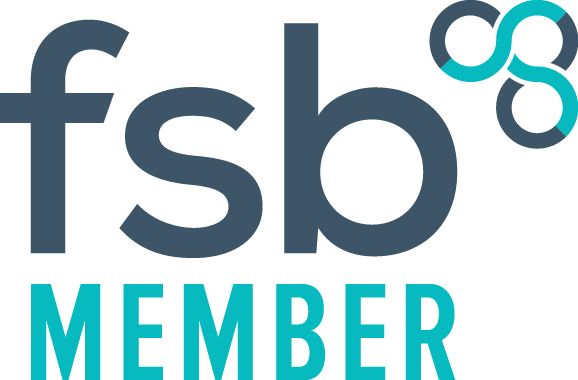Business Fraud Prevention in 2024 - Strategies to stay One Step ahead
Introduction
The rising sophistication of cybercriminals, combined with the acceleration of digital transformation, has opened new avenues for fraud, making it more challenging to safeguard assets, data and reputation.
In 2024, the fight against business fraud demands a proactive, tech-savvy approach that integrates cutting-edge tools and a culture of awareness across the organisation.
From phishing schemes to data breaches, invoice fraud, and internal misconduct, the types of fraud targeting companies are diverse and evolving.
The Rising Fraud Threat Landscape in 2024
Fraudsters are constantly developing new methods to exploit weaknesses in business processes and technology.
Here are some of the key fraud threats facing businesses in 2024:
1. Social Engineering Attacks: Social engineering attacks, such as phishing and spear-phishing, continue to grow in sophistication, targeting both individuals and companies. Cybercriminals use personalised, convincing messages to trick employees into sharing sensitive information or clicking on malicious links.
2. Insider Threats: Internal fraud, whether from disgruntled employees or third-party vendors, is on the rise. Insider threats can be difficult to detect and may involve unauthorised data access, misuse of company resources, or manipulation of financial records.
3. Invoice and Payment Fraud: Fraudsters are targeting companies’ financial systems, exploiting weaknesses in invoicing, payment processing, and vendor management to commit invoice fraud, fake billing schemes, and unauthorised transfers.
4. Deepfake and AI-Powered Fraud: AI-driven fraud tactics, such as voice cloning and deepfake technology, have added a new layer of deception, making it challenging to verify the authenticity of communications and requests.
5. Supply Chain Fraud: As supply chains become more complex and global, fraudsters are finding ways to exploit vulnerabilities, whether by intercepting goods, creating fake suppliers, or manipulating shipping documents.
Key Strategies for Business Fraud Prevention in 2024
To stay one step ahead of fraudsters, businesses must take a proactive approach to fraud prevention, using a mix of advanced technology, employee training, and process optimisation.
Here are some of the most effective strategies for fraud prevention in 2024:
1. Leverage Artificial Intelligence and Machine Learning
Artificial intelligence (AI) and machine learning (ML) are powerful tools in the fight against fraud.
AI-driven systems can analyse vast amounts of data in real time, identifying unusual patterns and flagging potential fraudulent activity before it causes harm. Machine learning algorithms can also adapt and learn from new types of fraud, becoming more effective over time.
For example, AI-based fraud detection systems can monitor transactions for anomalies, identify unusual patterns in user behaviour, and provide alerts when potential fraud is detected.
These tools are particularly useful for preventing payment fraud, as they can identify suspicious transactions based on previous behaviour and known fraud indicators.
2. Implement Multi-Factor Authentication (MFA)
One of the most effective ways to protect sensitive accounts and systems is through multi-factor authentication (MFA).
MFA adds an extra layer of security by requiring users to provide multiple forms of identification, such as a password and a one-time code sent to a mobile device, before gaining access.
In 2024, MFA is a baseline security measure, especially for any access to financial, payroll, and sensitive data systems. Even if a fraudster obtains an employee's login credentials, MFA makes it significantly more difficult to gain access without the second layer of verification.
3. Invest in Employee Training and Awareness
Despite advancements in technology, many fraud incidents begin with human error.
Social engineering attacks like phishing rely on unsuspecting employees clicking on malicious links or providing sensitive information. That’s why employee training remains one of the most important components of a robust fraud prevention strategy.
Regular training sessions, simulated phishing exercises, and clear reporting protocols help employees recognise potential threats and respond appropriately.
Employees should be aware of red flags, such as requests for sensitive information, unsolicited emails from unknown sources, and inconsistencies in invoices or payment requests.
4. Conduct Regular Risk Assessments
Fraud risks vary by industry, company size, and even geographic location.
Conducting regular fraud risk assessments helps businesses identify specific vulnerabilities and prioritise prevention efforts where they are needed most.
In 2024, fraud risk assessments are not a one-time exercise, but rather an ongoing process, allowing companies to adapt to new threats as they emerge.
These assessments should include a thorough review of financial processes, vendor management, cybersecurity protocols, and internal controls.
By identifying gaps in security and operational processes, businesses can implement targeted controls to reduce fraud risk.
5. Strengthen Cybersecurity Measures
A comprehensive cybersecurity strategy is essential for fraud prevention.
In 2024, cybercriminals are targeting vulnerabilities in cloud services, remote work systems, and digital payment platforms. Businesses should invest in robust cybersecurity measures, including firewalls, intrusion detection systems, endpoint protection and data encryption.
Regular vulnerability assessments, patching schedules, and audits ensure that systems remain protected against the latest threats.
Additionally, having a detailed incident response plan helps companies react quickly if a security breach occurs, minimising potential losses.
6. Monitor and Control Access Privileges
Access control is a crucial aspect of fraud prevention.
Only employees who require access to certain information or systems to perform their roles should have that access. Overly broad access privileges increase the risk of unauthorised access and potential fraud, especially from insider threats.
Implementing a least privilege policy ensures that employees only have access to the information and systems necessary for their specific job functions.
Regularly reviewing access privileges and revoking access when employees change roles or leave the company are important steps to prevent misuse of sensitive information.
7. Enhance Vendor and Supply Chain Security
In an interconnected global economy, businesses rely on multiple vendors and partners to operate.
However, this reliance also increases the risk of supply chain fraud. Fraudsters may exploit vendor relationships, impersonate suppliers, or intercept goods. To minimise these risks, businesses should strengthen vendor vetting processes, conduct regular audits and use secure payment methods.
It’s also essential to implement strong verification processes for any changes in payment details, ensuring that any request to alter payment instructions is legitimate.
Using blockchain technology or smart contracts can also add layers of security and traceability in high-risk supply chains.
8. Use Data Analytics for Continuous Monitoring
Data analytics is an increasingly valuable tool in fraud prevention, offering real-time insights and continuous monitoring.
By analysing financial data, transaction patterns, and employee behaviour, companies can identify anomalies that may indicate fraudulent activity.
For example, sudden increases in expenses, duplicate invoices or inconsistent data entries can be signs of fraud.
Automated data analytics tools can flag these anomalies, allowing finance teams to investigate potential issues before they escalate.
9. Establish a Culture of Transparency and Accountability
Creating a culture of transparency and accountability is essential for fraud prevention.
When employees feel encouraged to report suspicious activities and know that their concerns will be taken seriously, they are more likely to speak up when they spot red flags.
Implementing whistleblower policies and anonymous reporting channels can encourage employees to report fraudulent activity without fear of retaliation.
Additionally, establishing a code of conduct that emphasises integrity, transparency and compliance helps reinforce ethical behaviour across the organisation.
The Role of Technology in Fraud Prevention
While traditional fraud prevention strategies remain essential, advancements in technology are redefining what’s possible in fraud detection and response.
In 2024, businesses have access to powerful tools that make it easier to monitor and protect against fraud, including:
• Robotic Process Automation (RPA): RPA automates repetitive tasks, such as verifying invoices or tracking transactions, reducing the chances of errors or inconsistencies that fraudsters can exploit.
• Blockchain: Blockchain technology is being used to add transparency and security to transactions, supply chains, and record-keeping. Blockchain's decentralised, tamper-proof structure makes it difficult for fraudsters to alter transaction records.
• Biometric Security: Biometric verification, such as fingerprint scanning or facial recognition, adds an additional layer of security, particularly for access to sensitive data and high-value transactions.
• Predictive Analytics: Predictive analytics can help identify fraud trends by analysing historical data, allowing companies to anticipate and prepare for emerging threats.
Conclusion: Staying Ahead of Fraud in 2024
In an era of rapid digital transformation, fraud prevention is more challenging—and more critical—than ever.
Businesses that invest in advanced technologies, foster a culture of awareness, and regularly update their fraud prevention strategies are better positioned to stay one step ahead of fraudsters.
While no organisation can eliminate fraud risk entirely, a proactive approach to fraud prevention can significantly reduce exposure and protect the bottom line. By leveraging AI-driven tools, enhancing employee training, and fostering transparency, businesses can create a robust defence against both internal and external threats.
Fraud prevention is an ongoing journey and Green Catalyst is here to assist. In 2024, staying vigilant and adaptable is the key to safeguarding your organisation’s assets, reputation and future growth.

"Green Catalyst" is the trading name of Green Catalyst Business Solutions
All services under Green Catalyst are provided through a UK Umbrella Company.
No services are directly delivered by Green Catalyst as a business entity.
© 2024 Green Catalyst. All rights reserved.
Before you Go!
our new blogs, products & offers.
